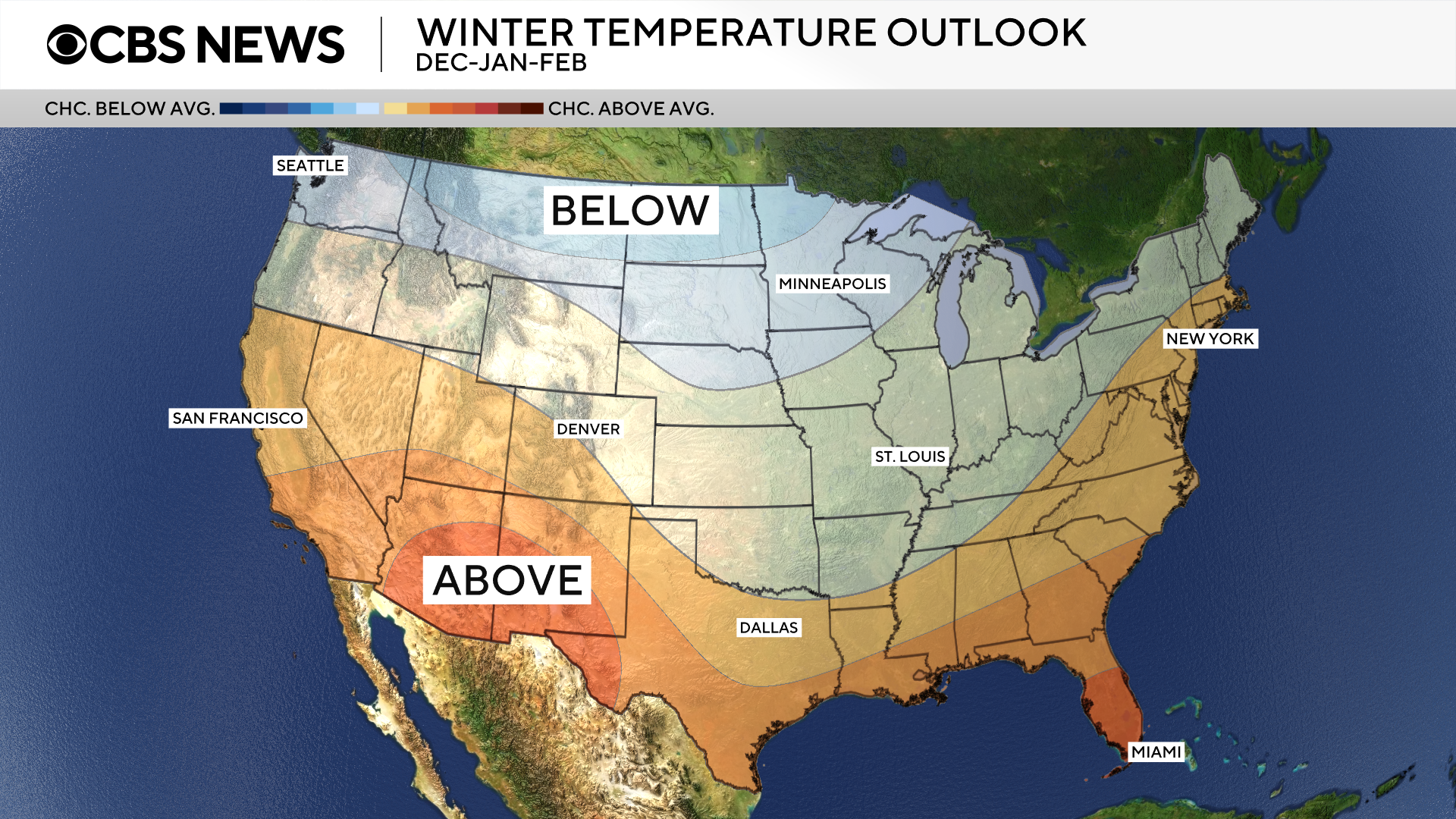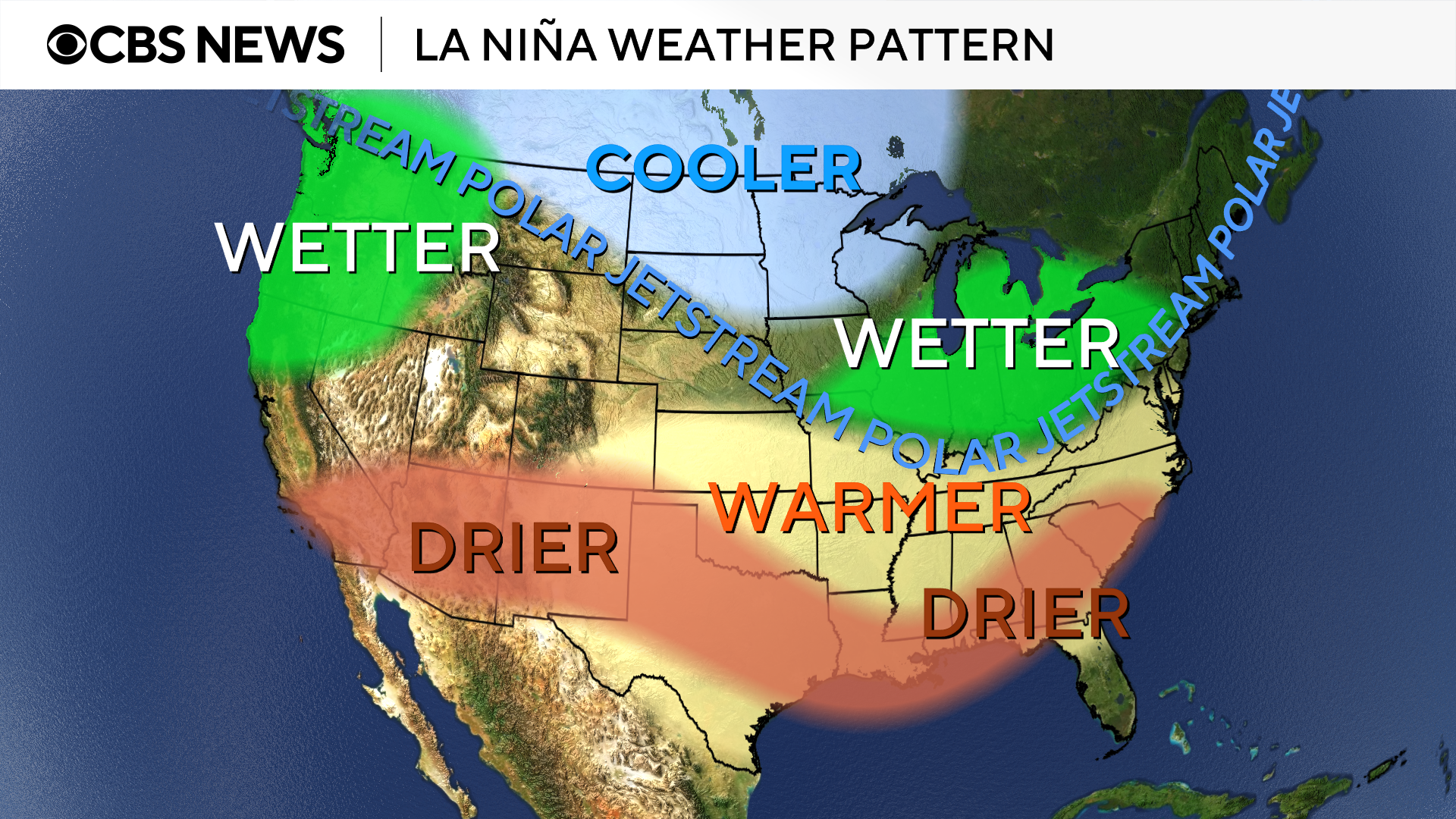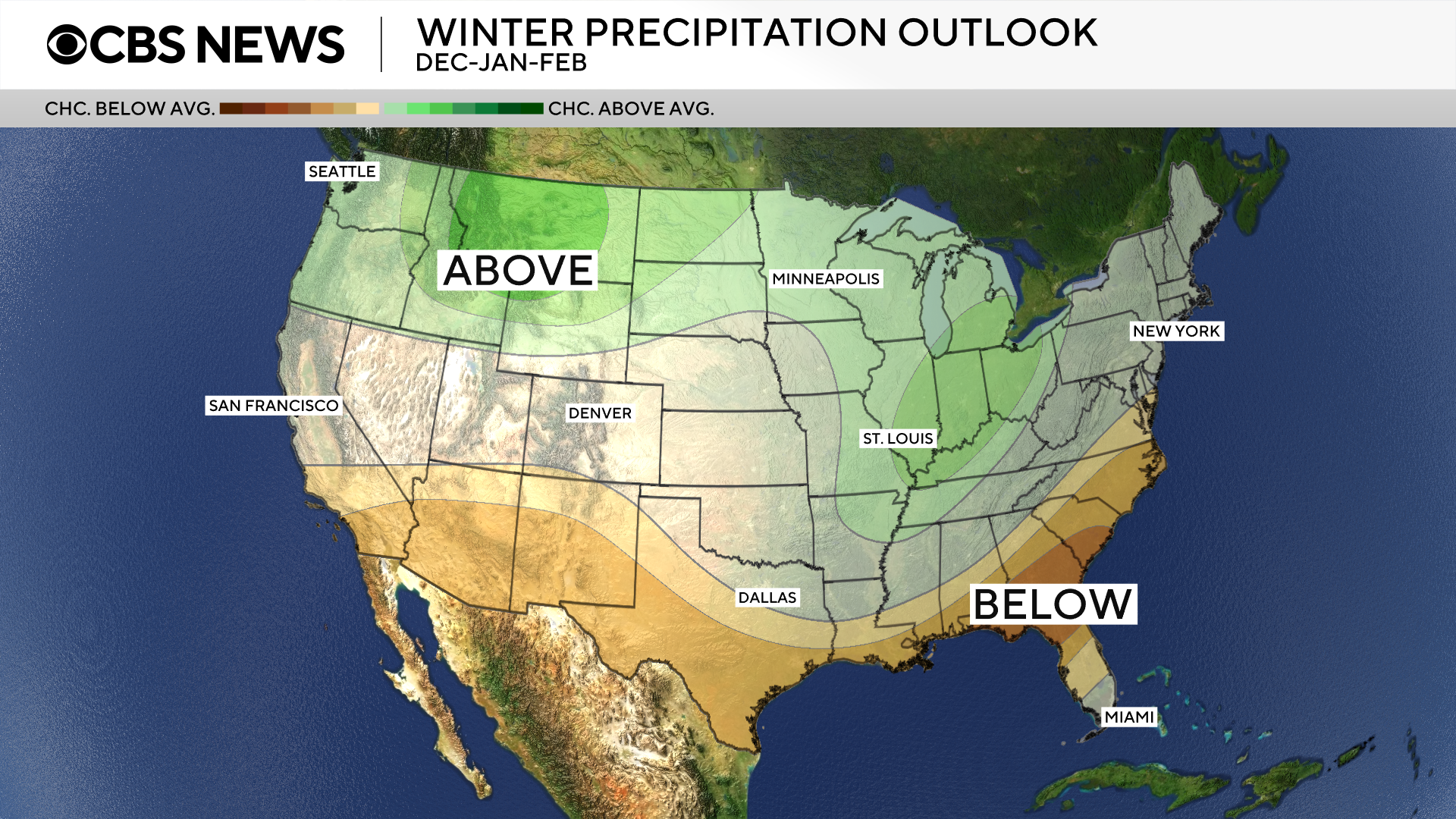The National Oceanic and Atmospheric Administration issued its 2025-2026 winter forecast outlook on Thursday, which predicts seasonal changes for different parts of the United States for the months of December, January and February.
Created by NOAA's Climate Prediction Center, the latest outlook anticipates warmer-than-average temperatures for much of the contiguous U.S., although southern states will most likely experience a drier and warmer winter than usual. Conditions in northern states are expected to be cooler and wetter.
 Nikki Nolan/CBS News
Nikki Nolan/CBS News
Those weather patterns are consistent with the recent transition into La Niña, the cooler phase of the El Niño-Southern Oscillation (ENSO) cycle. ENSO is an alternating system of climate patterns determined by sea surface temperatures and precipitation levels across an area of the equatorial Pacific Ocean that depart from the neutral norm.
Officials at NOAA announced earlier this month that the U.S. had shifted from the cycle's "neutral" phase to La Niña, as sea surface temperatures in the equatorial Pacific dropped below average measurements.
Both La Niña and its opposite, El Niño, the cycle's "warm phase," wield strong influence over weather conditions in North America. When La Niña is active, it typically brings drought to southern parts of the country and flooding rains to the Pacific Northwest and Canada, according to NOAA. During winter months, this phase of ENSO often leads to warmer and drier conditions in the South and cooler conditions across the North, which tend to accompany greater amounts of precipitation.
 Nikki Nolan/CBS News
Nikki Nolan/CBS News
Forecasters have said they expect La Niña to last through February 2026 before transitioning back to the neutral phase of the cycle as the spring season begins.
NOAA's winter outlook does not offer snowfall predictions, but it does forecast above-normal overall precipitation between December and February for the Pacific Northwest and northern California along the West Coast, as well as the northern Rockies, Great Plains and western Great Lakes, all of which are consistent with the presence of La Niña.
 Nikki Nolan/CBS News
Nikki Nolan/CBS News
Also aligned with the phase's characteristic effects is the precipitation forecast for the southern half of the country, with NOAA predicting drier than normal conditions across the Southwest, southern Texas and the Southeast.
Outside of the contiguous U.S., the outlook predicts warmer than usual winter months for northwestern Alaska and cooler than normal months for the state's panhandle, with above-average precipitation forecast for western parts of the state and below-average precipitation forecast for the panhandle area. A separate forecast outlook is issued for the Hawaiian islands.
Nikki Nolan contributed to this report.
NOAA updates hurricane forecast
NOAA updates hurricane forecast for 2025 Atlantic season
(02:02)

.jpeg)





































 English (US) ·
English (US) ·